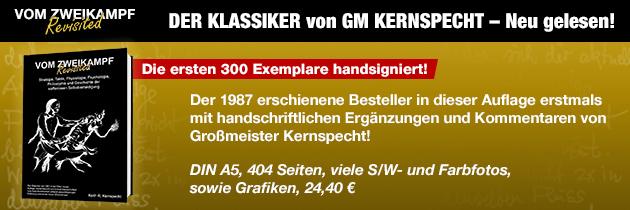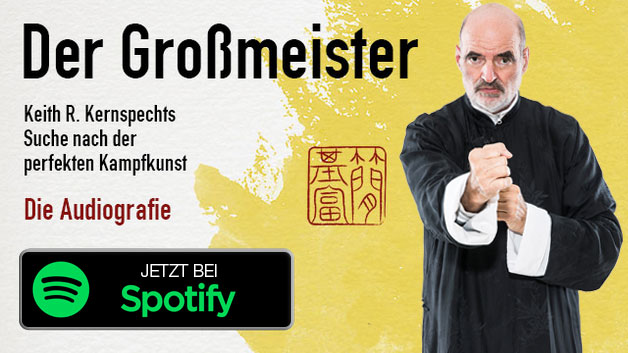Full of skill or stuffed with knowledge? – Sifu Thorsten de Vries
During Chi-Sao with you I hardly feel anything - except the hits
Dear Si-Gung,
It’s a pity that we had to cancel the last private lesson. I hope you can find an alternative time soon.
I still remember the previous lesson very well, however. Apart from the fact that any Chi-Sao training with you is a frustrating experience, it is also always enlightening and inspiring. I have the impression that private tuition with you makes me improve more rapidly – not merely through practice, but also through my attempts to understand why your movements seem to be so incredibly faster than mine.
My aim is to master WingTsun as completely as you some day, but the closer I come to this goal, the more I feel that the interim stages, and therefore my progress, are becoming smaller and smaller. And I keep asking myself whether we two mean the same thing when we refer to Chi-Sao. It seems to me that I have detected Chi-Sao in a new guise. I find it difficult to understand what I should be able to do, and what does not belong in my programme. When I consider that I have mastered 90 % of my programme, this might amount to 20 % of your skill, but then again it might be only 2 %.
What I find the most frustrating is the uncertainly whether the road I am travelling is the right one.
The experience I had with you in Kiel affected me greatly, as I thought I had reacted correctly. But then, what does correct or incorrect actually mean? It was at this point that I started to think about the exercise even more intensively. I should have responded to the pressure elastically, as that was the object of the exercise. Instead I kept my arms rigid and relied on shifting my weight. Or I had anticipated the attack and reacted to the visual impulse, not with Chi-Sao reflexes.
Since then I have thought about this experience a great deal, and tried out the exercises with my instructors. Many things went through my head at this stage, and I will try to detail some of these as follows:
While we learn to recognise the attacker’s intended movement via the eyes in BlitzDefence, we rely on what we can feel in Chi-Sao. But when doing Chi-Sao with you I hardly feel anything, only the hits.
If I could feel any pressure it would be my own, and this does not enable me to react to your pressure as it comes towards me. I remember when you were teaching your "stop Chi-Sao", which really made me think. If it is really the case that the direction of a movement can be changed at any point of a movement sequence, this represents a great advantage over somebody who is unaware of these points. At my level this means that instead of using Bong-Wu as in the student programme, I can respond with a weight shift and Jum-Sao from the wooden dummy form. That is one point I have identified, but how many of these points do you know? And how many variations of these, plus the defences to them, are there in addition?
I ask myself whether Chi-Sao is not actually a sticking-arms exercise, but rather concerns being able to release oneself whenever I like, at any point whatsoever. There are far more unanswered questions than answers. Perhaps the reaction to the pressure is already too late, and the reaction to the contact not yet soon enough? If I already feel muscle contraction, this is a tactile perception of a stimulus to which I do not react directly, but rather anticipate and follow with a completely different action. Tactile anticipation, so to speak.
When you are teaching me I am constantly engaged in reacting. Somebody who acts does not need to react.
When I teach the new programmes, particularly those from the last seminar, many students and also instructors have a problem with the positioning of the arms. They do not see that the position with both arms forward is actually nothing but Man-Sao Wu-Sao with a double Man-Sao. What the attacker sees as the seemingly unprotected area in the centre tempts him to attack there. But they understand the way in which the bodyweight is shifted even less, and how can they if it comes from the LDBK programme.
Despite my repeated attempts to show and explain this to my instructors, they have the impression that this is not the WT it was before. They are wary of using the wider wedge with Tan or Fook. But then, how can one explain something one only barely understands oneself. At any rate, the programme is becoming increasingly clear for me.
If the visual stimulus is an anticipation of the decision to attack, the next stage is tactile anticipation or even intuition. You once said that even the thought is punishable. Only then does the conventional Chi-Sao reaction to the pressure follow.
As the transition from the free phase to the contact phase is something of a shock, it is very difficult to respond flexibly at once. One might compare this with water: it gives way at very close range, but can be as hard as concrete under fast acceleration. Our arms act similarly when impacted by the opponent’s arm. Not forgetting the effects of adrenalin, i.e. tense muscles and tunnel vision.
For me this possibly provides a key to understanding the wooden dummy programme. Despite my rigid arms, this allows me to go around the opponent’s arms to avoid the attack or launch my own attack. That is how you once explained it at one of the T4 seminars, or at least that is how I understood it.
In my own view the Chi-Sao sections continue to be very important, as they are always a guiding theme to which I can refer when I am teaching. I think that if the reflexes were taught in isolation, this would certainly have a beneficial effect on self-defence capability in some respects. However, I think that WingTsun would suffer without these two-man exercises. After all, music or language are not limited to a small number of frequently practiced phrases or melodies.
I hope you have been able to follow my thoughts to some extent. I could certainly have written some of this in more detail, but it is not long to the end of the month.
Perhaps you will have a few answers for me during our next lesson, or will correct the odd wrong idea.
Naturally I do not mind if you publish what I have written, or extracts.
Thorsten de Fries, 2nd TG
Contributions:
- Editorial: Full of skill or stuffed with knowledge?
- Full of skill or stuffed with knowledge? – Sifu Bodo Seibold
- Full of skill or stuffed with knowledge? – Markus Senft
- Full of skill or stuffed with knowledge? – Sifu Thorsten de Vries
- Full of skill or stuffed with knowledge? – Sifu Stephan Bollen
- Full of skill or stuffed with knowledge? – Sifu Kasper Lund Nielsen
- Full of skill or stuffed with knowledge? – Sifu Michael König
- Full of skill or stuffed with knowledge? – Sifu Andreas Tomczak
- Full of skill or stuffed with knowledge? – Dai-Sifu Oliver König
- Full of skill or stuffed with knowledge? – Sifu Jörg Kilian
- Full of skill or stuffed with knowledge? – Christoph Brük
- Full of skill or stuffed with knowledge? – Pavan




